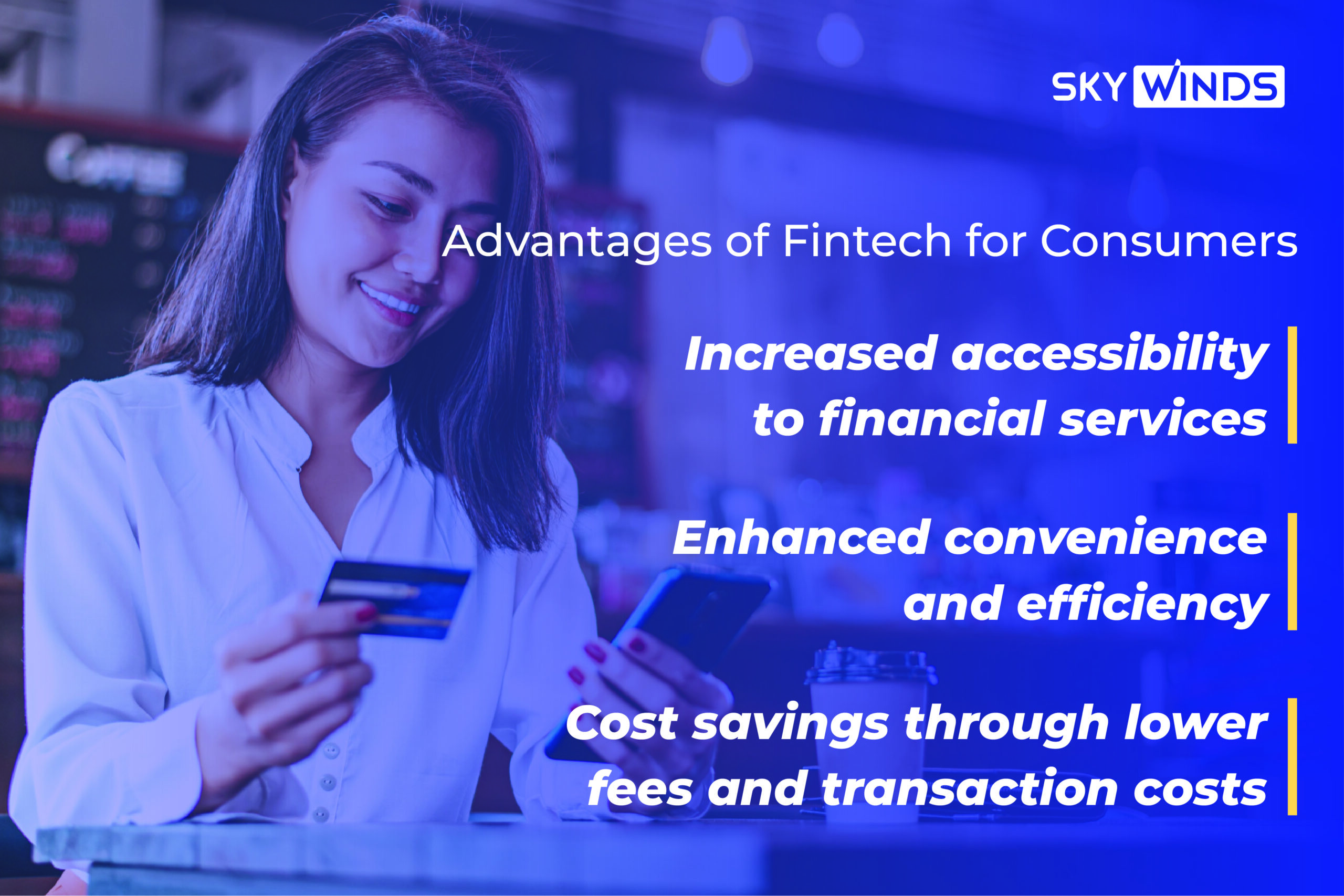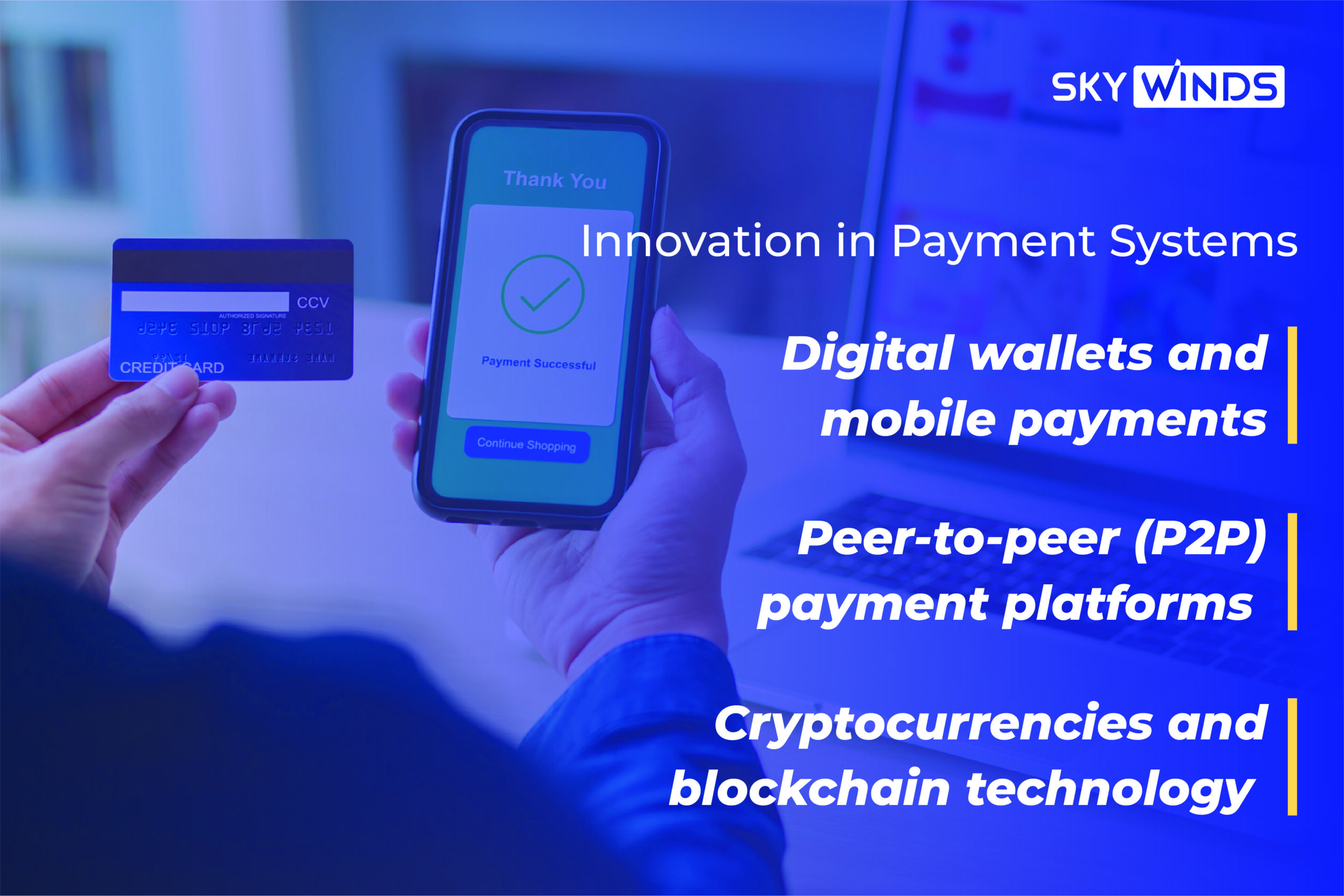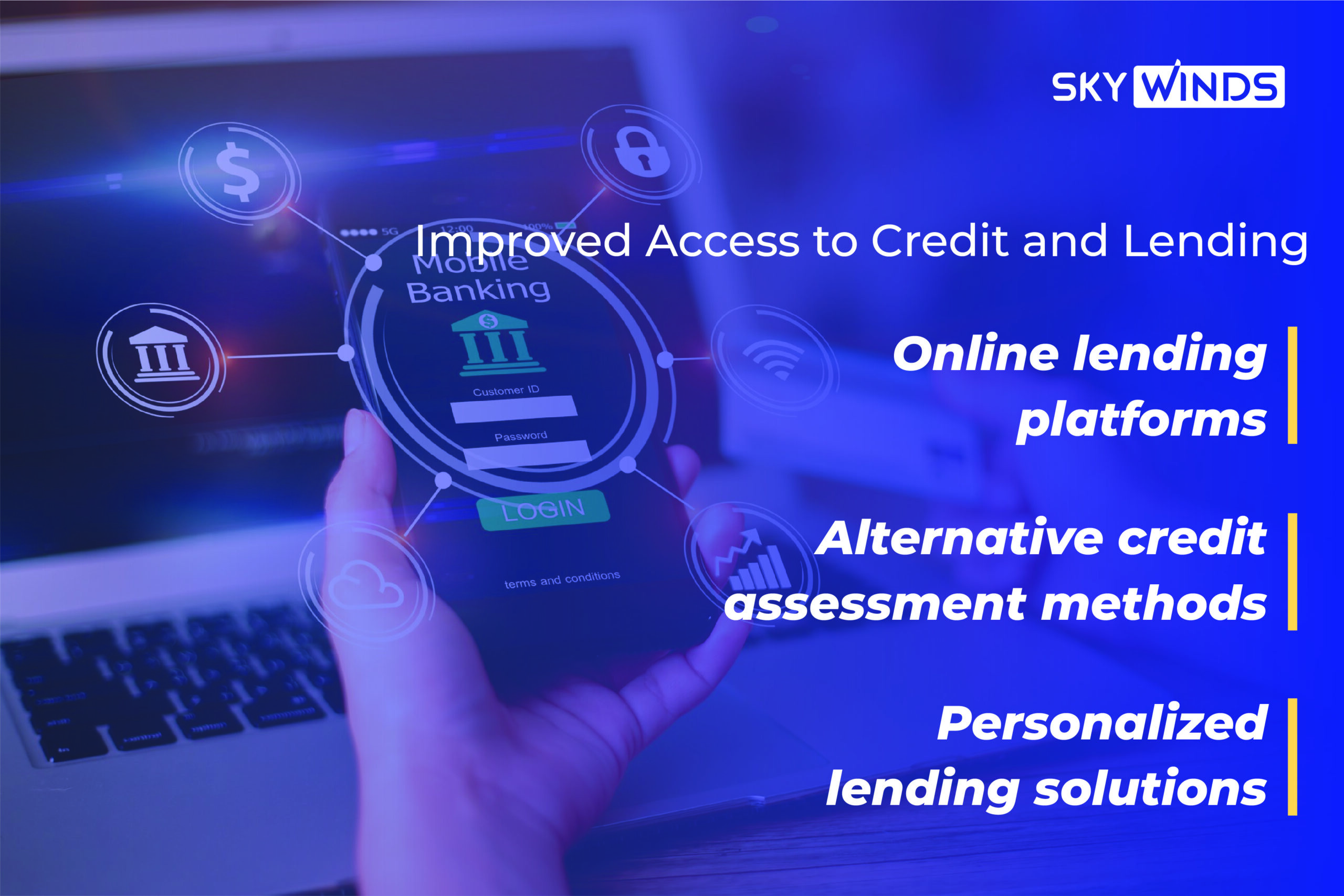
Fintech also referred to as financial technology, has completely changed how consumers access and manage their financial services. The financial sector has benefited greatly from the integration of technology. Fintech’s impact on consumers now has greater accessibility, greater convenience, and cost savings.
Fintech is practically all around us, whether we are making a purchase at a nearby tea shop, reviewing our financial activities online, or using spending-tracking applications that help financial institutions make quick loan choices.
Fintech, which employs technology to improve financial procedures, has been successful in carving out a niche and gaining more recognition outside. As a result, a wide range of industry sectors are investing a considerable amount of money in the fintech industry, which has increased business productivity and reinforced collaborations for innovation and research.
Table of Contents
Advantages of Fintech for Consumers

Fintech, or financial technology, is the innovative use of technology in the financial sector that enables consumers to do a range of financial transactions swiftly and easily. Fintech advancements benefit consumers by enabling peer-to-peer lending, digital banking, mobile payments, and other services that give users more control over their finances, fintech has opened up new opportunities for consumers.
Increased accessibility to financial services
In the past, using new financial technology services meant going to actual branches during specific operation times. Fintech has, however, eliminated these obstacles, enabling anytime, everywhere access to financial services. Businesses may deliver payments and financial transactions at updated and improved levels in a couple of seconds because of fintech’s capacity to move swiftly and securely. Increasing consumer access to financial services is among the biggest benefits of fintech.
Enhanced convenience and efficiency
Technology serves as a de facto driver for improving operational efficiency across all industries. Fintech facilitates more accessible financial transactions and operations while also improving ease and efficiency. Technology has streamlined certain processes, making them speedier, more automated, and more approachable. More automated approaches lead to convenience and efficiency of fintech for consumers.
Cost savings through lower fees and transaction costs
Fintech’s role in making consumers’ lives easier by cost savings. Businesses that use financial technology may help to reduce total costs. Fintech was used to create a platform that mixes physical and digital payments by utilizing bank account cards and client ids.
Fintech businesses can lower overhead costs connected with physical branches and paperwork by utilizing technology and operating through digital platforms, passing those savings on to customers.
Innovation in Payment Systems

Empowering consumers through innovative fintech tools, the traditional payments business has been impacted by financial technology (fintech) for many years. Customers now expect a uniform payment experience across platforms and devices due to the growth of e-commerce and mobile payments. Innovation in payment systems is the creation and application of new tools, platforms, and procedures that speed up transactions, increase security, and make them more convenient.
Digital wallets and mobile payments
When compared to conventional payment methods, digital wallets have several benefits. They enable users to make payments fast and easily by eliminating the need to carry physical currency or cards. With just a few clicks on a smartphone, mobile payments made using digital wallets may be performed, increasing convenience for both customers and businesses. Additionally, to encourage use, digital wallets frequently offer incentives, discounts, and loyalty programmers.
Peer-to-peer (P2P) payment platforms
Peer-to-peer (P2P) payments are another fintech invention that has upended the traditional payments sector. Individuals who use peer-to-peer payment apps can send and receive money from friends and family members right from their cell phones which is Consumer empowerment through fintech.
P2P payments are simple and fast because transactions usually only take a few seconds. Additionally, some apps contain social features, like the capability to annotate payments with comments and emojis before sharing them on social media.
Cryptocurrencies and blockchain technology
The growth of Bitcoin and other cryptocurrencies is one of the recent financial developments that has gotten the most media attention. If there is something that businesspeople are doing extensive research on. Bitcoin and the blockchain have resided primarily in the shadows since their inception in 2008.
At the heart of cryptocurrencies is blockchain technology, which provides a secure and open ledger system. It allows for peer-to-peer transactions, minimizes the cost of transactions, and guarantees payment record accuracy without the use of a middleman. Blockchain-based payment systems can more quickly, securely, and effectively replace current financial systems.
Improved Access to Credit and Lending

In the contemporary digital era, the financial technology (fintech) industry has fundamentally altered various aspects of the financial sector. Fintech has had a significant impact on several vital areas, including increasing access to money and financing. Fintech has enhanced credit access in a variety of ways, including online lending platforms, alternative credit evaluation methodologies, and personalized loan solutions.
Online lending platforms
Online lending platforms have evolved into cutting-edge choices for individuals and businesses seeking easy and quick access to credit. Borrowers and lenders can connect online using these platforms, expediting the borrowing process. Borrowers can use Internet lending platforms to apply for loans, compare offers from several lenders, and choose the one that best matches their needs.
Comparing online lending platforms to conventional lending institutions, there are various advantages. They offer a streamlined and user-friendly experience first and foremost. The entire loan application procedure can be completed online by borrowers, doing away with the requirement for copious amounts of paperwork and in-person bank visits. These platforms’ digital nature allows for quick loan approval and disbursal, frequently in a matter of days or even hours.
Alternative credit assessment methods
Credit scores, which are derived from a person’s credit history and financial behaviour, are the mainstay of traditional credit assessment techniques. However, this strategy frequently excludes people with weak credit histories or those who don’t fit the tight requirements established by conventional credit bureaus. To overcome these restrictions and give underprivileged communities access to finance, fintech has proposed new credit evaluation techniques.
Alternative credit assessment techniques examine a borrower’s creditworthiness using non-traditional data sources. Transactional data, social media activity, educational history, and even psychometric tests are a few examples of these sources. Fintech companies can more precisely determine creditworthiness and give credit to people who may have been neglected by traditional lenders by taking a wider range of characteristics into account.
Personalized lending solutions
In the fintech sector, customized loan solutions have gained traction, enabling borrowers to acquire finance suited to their particular needs. Fintech gives lenders the ability to tailor loan terms based on individual circumstances, unlike traditional lending institutions that frequently offer standardized loan packages.
Utilizing technology and data analytics, personalized lending solutions accurately determine the needs and preferences of borrowers. Fintech firms can analyze enormous volumes of data and spot patterns that traditional lenders might miss using algorithms and machine learning models. Through this research, lenders can provide customized loan amounts, interest rates, repayment plans, and other terms that complement borrowers’ financial objectives.
Financial Planning and Wealth Management

By utilizing cutting-edge technology and digitalizing services that were previously very inflexible, in-person, out of reach for many people, and primarily pricey, fintech is upending several traditional sectors. The amount spent on fintech globally in 2020 was $121.5 billion. This is a significant rise from the $20 billion global expenditure in 2015.
Wealth managers typically provide a wide range of professional financial services, from general financial planning to investing advising. In essence, these multifaceted advisors offer guidance to clients wishing to manage their financial resources and portfolios and can help with streamlining consumer transactions with fintech.
Robo-advisors and automated investment platforms
The fintech revolution in consumer finance with Robo-advisors. It is an automated investment platform that offers financial planning and investment services that are powered by algorithms. To create personalized investment suggestions, they use cutting-edge algorithms to analyze a person’s financial information, risk tolerance, and investment objectives. Exchange-traded fund (ETF) diversified portfolios and automated rebalancing are standard features of robo-advisors.
The value of robo-advisors as a whole was estimated to be $4.51 billion in 2019 and is projected to climb by more than 9 times that amount by 2027, indicating that clients are becoming increasingly ready and confident to use cutting-edge advisory models.
Goal-based financial planning tools
Setting and accomplishing specified financial goals is the core of goal-based financial planning. It provides a structured approach to financial planning, assisting individuals in aligning their financial plans and investments with their desired outcomes. By setting goals, tracking their progress, and maintaining motivation, people can achieve their financial objectives. This results in improving consumer financial well-being with fintech.
Tools for goal-based financial planning help people set and track their financial objectives. Goal planning, spending tracking, investment tracking, and progress visualization are among the capabilities that these systems often include. Users can enter their financial data, specify objectives (such as saving for a down payment, retirement, or education), and get suggestions on how to best spend their resources to meet those objectives.
Access to diversified investment options
A fundamental tenet of investment management is diversification, which aims to lower risk by distributing investments across various asset classes, industries, and geographical areas. Portfolio diversification can help to minimize the effects of market volatility and increase possible returns. For anyone looking to create robust investment portfolios, access to various investment options is essential.
By providing a variety of financial products, fintech platforms make it easier for people to access varied investment possibilities. Individuals can invest in a wide range of assets using these platforms, including equities, bonds, ETFs, mutual funds, real estate investment trusts (REITs), and alternative investments. According to their risk tolerance and investment objectives, investors can explore and choose suitable investments using the user-friendly interfaces that fintech platforms frequently offer.
Enhanced Security and Fraud Prevention
As the popularity of digital transactions continues to grow, improved security and fraud prevention in the fintech industry have emerged as a top priority. To address these issues, several steps have been taken to guarantee the integrity and safety of financial systems.
Biometric authentication and advanced encryption
Biometric authentication has become a very safe way to confirm people’s identities simplifying consumer lives with fintech. To authenticate users, it makes use of distinctive physical or behavioral traits like fingerprints, iris scans, or facial recognition. Fintech platforms can drastically lower the risk of identity theft and unauthorized access by integrating biometric data into the authentication process.
Advanced encryption methods are also essential for safeguarding confidential financial data. Data is transformed into an unintelligible format by encryption methods, which can only be unlocked with a unique key. Strong encryption techniques are used by fintech companies to secure data transmission and storage, ensuring that private data is kept out of the hands of unauthorized individuals.
Real-time fraud detection and prevention systems
Systems for real-time fraud detection and prevention use machine learning (ML) and artificial intelligence (AI) algorithms to analyze massive volumes of data and quickly spot fraudulent actions. These systems keep an eye on user behavior’s, transaction patterns, and numerous risk indicators to immediately identify questionable activity.
Fintech systems may continuously learn from and adjust to new fraud trends using ML algorithms, improving their capacity to recognize complex new fraud methods. Real-time notifications and alerts make it possible to take prompt action to stop future financial losses and safeguard user accounts with this fintech’s positive impact on consumer behavior’s.
Consumer protection regulations and safeguards
In the fintech industry, governments and regulatory agencies are essential for defending consumer interests. To promote accountability, fairness, and transparency among fintech companies, they have put in place specific rules and guidelines this help to enhance consumer experiences with fintech.
Fintech platforms frequently need to install strong security measures, offer clear terms and conditions, and set up efficient dispute resolution procedures to comply with these requirements. Consumers are better protected from fraudulent practices, data breaches, and other security threats due to compliance with these standards.
Challenges and Considerations
Data privacy and cybersecurity concerns
Whether it’s mobile banking, payment apps, or Fintech in general, data security has emerged as one of the top issues in the online world. In 2021, there were 1,862 data breaches, which cost $4.24 million on average. This is a new record high, raising more worries about data security and privacy.
To safeguard user information against security lapses and unauthorised access, fintech companies must put strong security measures in place. To remain ahead of developing cyber dangers, they must adhere to data protection laws, ensure safe data storage and transmission, and frequently upgrade their security processes.
Technological Literacy and Inclusivity
Fintech has many advantages, but inclusion and technology literacy are subjects of concern. Not everyone has access to technology equally or is equipped with the knowledge needed to use digital financial services. To assist customers to comprehend and efficiently use their services, fintech companies must address this difficulty by offering user-friendly interfaces, detailed instructions, and instructional resources. To guarantee equal access to fintech solutions, inclusivity initiatives should also take into account accessible features for individuals with disabilities and close the digital gap.
Regulatory compliance and oversight
The fintech sector operates in a complex regulatory environment. Just a few of the legal frameworks that fintech companies must contend with include financial rules, data protection laws, and anti-money laundering (AML) requirements. For fintech startups and forward-thinking businesses in particular, it might be challenging to adhere to these criteria. It necessitates a large investment in time, talent, and legal and regulatory standards understanding. Fintech companies must establish robust compliance processes and take a proactive approach to keep on top of the evolving regulatory landscape.
Changing the Financial Landscape Worldwide
Fintech, which combines technology and banking, is expanding quickly on a global scale. With a CAGR of 25.3% from 2021 to 2028, the worldwide Fintech industry is anticipated to reach $323.68 billion by that year. With a predicted CAGR of 28.4% over the same time, the Asia Pacific region is expected to have the greatest growth. Peer-to-peer (P2P) payments, online financing, and mobile payments are some of the most well-liked Fintech services, especially among millennials. Consumers can take advantage of these services’ simplicity, accessibility, and affordability, which boosts financial inclusion and lowers expenses.
But there are still issues with security and privacy in Fintech services. Online financial transactions and the storage of personal information raise the possibility of cyberattacks and data breaches. To preserve client data and uphold confidence, fintech organizations must priorities cybersecurity measures and adhere to data privacy laws. To address these issues, cooperation between Fintech businesses, regulatory organizations, and cybersecurity specialists is crucial.
Over 25,000 businesses are expected to launch in 2021 alone, which is a considerable number and fuels the growth of the Fintech sector. These businesses contribute to the dynamism and competitiveness of the sector by offering ground-breaking solutions to diverse financial industries. Fintech investment reached $179 billion in 2021, demonstrating the belief and enthusiasm of investors in the potential of the industry.
The United States leads the Fintech market in terms of regional domination, followed by China and the United Kingdom. The Asia Pacific region is quickly growing, which indicates that it is becoming more important in the Fintech scene. The area presents enormous prospects for Fintech expansion and innovation due to its sizeable population and rising rate of digital penetration.
Conclusion
Transformative fintech solutions for consumers, they can now have access to and management of their financial services in entirely new ways thanks to fintech, which has several advantages. The benefits of fintech are numerous and include improved access to financial services, convenience and efficiency, cost savings due to lower fees and transaction costs, innovation in payment systems, improved access to credit and lending, financial planning and wealth management, improved security and fraud prevention, as well as a host of other benefits.
Looking ahead, there is enormous potential for the fintech sector. The sector is primed for additional innovation and disruption as a result of technological breakthroughs and the growing usage of emerging technologies like blockchain and cryptocurrencies. The widespread adoption of decentralized finance (DeFi), the incorporation of AI and ML into financial services, and the extension of open banking projects are potential future advancements.
Fintech has enhanced financial planning and management tools for customers, giving them more control over their money, better accessibility, and favorable effects on consumers’ financial lives. Fintech is still evolving and adapting to deal with hurdles including data privacy and cybersecurity worries, technology literacy and inclusivity, regulatory compliance and monitoring, and these problems eventually aim to improve consumers’ overall financial well-being.
FAQs
Q1 What is fintech?
Software, mobile applications, and other technologies designed to enhance and automate conventional forms of finance for both corporations and consumers are together referred to as fintech.
Q2 How does fintech make consumers’ lives easier?
How consumers handle their bank accounts and make payments has fundamentally altered. Fintech app development companies offering services like mobile banking, blockchain, cryptocurrencies, and digital wallets have significantly transformed the financial industry.
Q3 What are some examples of fintech in payment systems?
A fintech payment provider offers financial services such as bill payments, merchant cash advances, digital wallets, credit card and debit card payments, and other comparable banking services.
Q4 How does fintech improve access to credit and lending?
By minimizing paperwork, giving lenders immediate access to bank accounts and other financial data, and enabling them to offer quicker customer service, fintech speeds up the loan approval process. Streamlining the application procedure enables lenders to decide on loans more quickly and with greater knowledge.
Q5 What role does fintech play in financial planning and wealth management?
Custom fintech apps development company makes it possible for wealth managers to provide better service, creating a completely new skill set called wealth tech. Wealth tech, which is frequently powered by artificial intelligence (AI) and machine learning (ML), uses sophisticated algorithms to advise clients on the best investment or savings strategies with the least amount of human involvement.


